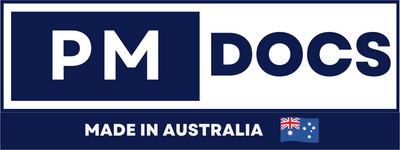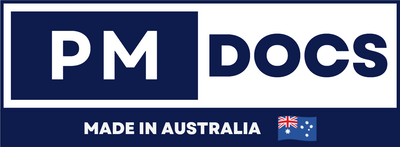Post Implementation Review Template
Introduction
A post-implementation review (PIR) is essential in any project or process. It provides an opportunity to evaluate the project's success, identify areas for improvement, and ensure that goals and objectives are met. To streamline this process, a post-implementation review template can be used. This template is a structured and comprehensive guide to conducting a thorough review and effectively analyzing the project's outcomes. This blog will explore the critical components of a post-implementation review template and how it can benefit your organization's future projects.

The Importance of Post Implementation Reviews
1. Evaluation of Effectiveness: Conducting a PIR helps assess the effectiveness of the implementation process. It allows organizations to review whether the intended outcomes were achieved and identify any gaps or areas for improvement. In the English language, PIRs can help determine if language training programs, curriculum changes, or language learning software have successfully met their objectives in improving communication skills.
2. Accountability and Responsibility: PIRs hold individuals and teams accountable for their roles and responsibilities in the implementation process. By reviewing the progress and outcomes, organizations can identify any issues or obstacles faced during the implementation and take necessary measures to address them.
3. Continuous Improvement: PIRs provide valuable insights for continuous improvement. By analyzing the successes and challenges of previous implementations, organizations can learn from their experiences and make informed decisions for future initiatives related to the English language.
4. Stakeholder Engagement: PIRs facilitate stakeholder engagement and collaboration. Engaging all relevant stakeholders in the review process, including teachers, students, trainers, and administrators, ensures that diverse perspectives are considered and allows for the identification of different challenges and opportunities.
5. Quality Assurance: PIRs are crucial in ensuring quality assurance. By examining the results and impact of an implementation, organizations can ensure that the implemented strategies and practices align with established quality standards in English language teaching and learning.
Critical Components of a Post-Implementation Review Template
1. Project Overview
Please provide a brief project summary, including its objectives, scope, and timeline.
Mention any critical stakeholders involved in the project.
2. Implementation Process
Describe the steps and methodologies followed during the implementation phase.
Identify any challenges or obstacles faced during the implementation.
Mention any adjustments or modifications made during the process.
3. Achieved Objectives
Review each objective outlined in the project plan and assess whether they were successfully achieved.
Provide specific examples or metrics to measure the success of the project.
4. Lessons Learned
Identify any lessons learned from the implementation process.
Discuss what went well and what could have been improved upon.
5. Stakeholder Feedback
Gather feedback from key stakeholders on their experience with the implementation.
Include both positive feedback and any areas where improvement is needed.
6. Project Impact
Analyze the impact of the implemented project on the target audience or organization.
Discuss any positive changes or improvements resulting from the project.
7. Project Documentation
Review the documentation produced during the implementation phase.
Assess the completeness and accuracy of the documentation.
8. Project Costs
Evaluate the costs associated with the implementation.
Compare the actual costs with the initial budget and discuss any variances or overruns.
9. Recommendations for Future Projects
Provide recommendations based on the project experience.
Identify areas for improvement and suggest strategies for future project implementations.
10. Conclusion
Summarize the overall findings of the post-implementation review.
Highlight any critical successes, challenges, or lessons learned.

![]() To maintain a continuous improvement process in the English language, consider the following steps:
To maintain a continuous improvement process in the English language, consider the following steps:
1. Set Clear Goals: Define what areas you want to improve regarding English language skills, such as reading, writing, speaking, or listening. Set specific goals that are measurable and achievable.
2. Assess Your Current Level: Evaluate your English proficiency level by taking formal assessments, such as language proficiency tests or self-assessment tools. This will help you identify your strengths and weaknesses.
3. Identify Improvement Areas: Based on your goals and assessment results, identify areas where you need improvement. For example, you may need to work on pronunciation, fluency, or vocabulary to improve your speaking skills.
4. Create a Learning Plan: Develop a plan to address the identified improvement areas. Break down your long-term goals into smaller, manageable tasks. Include specific steps and resources you will use to improve your English language skills.
5. Seek Feedback: Regularly seek feedback from others, such as teachers, language tutors, or native English speakers. They can provide constructive criticism and suggestions to help you improve.
6. Practice Regularly: Set aside dedicated time each day or week to practice English. Engage in activities that allow you to apply and reinforce your language skills, such as reading books, watching English movies, conversing with native speakers, or joining language exchange programs.
7. Utilize Resources: Use available resources to support your learning. Utilize online language learning platforms, mobile apps, textbooks, grammar guides, podcasts, or language learning websites. Find resources that align with your goals and learning style.
8. Reflect and Track Progress: Reflect on your learning journey regularly. Analyze your progress and evaluate what is working well and what needs adjustment. Keep a record of your achievements, challenges, and areas of improvement. This will help you stay motivated and make necessary changes to your learning plan.
9. Continuously Challenge Yourself: As you progress, challenge yourself by tackling more complex tasks or topics. Push yourself outside your comfort zone to practice using English in various contexts, such as giving presentations, participating in debates, or writing essays.
10. Stay Motivated: Maintain a positive mindset and stay motivated throughout the learning process. Celebrate your achievements, even the small ones, and view setbacks as opportunities for growth. Surround yourself with English-speaking environments and engage with a supportive community of language learners to stay inspired.
Conclusion,
A post-implementation review template is an essential tool for assessing the success and efficiency of a project. By utilizing this template, organizations can identify areas of improvement, evaluate project outcomes, and determine whether initial objectives were met. It provides a structured framework for conducting a thorough analysis of the project's strengths and weaknesses, allowing for informed decisions for future initiatives. To ensure the success of your projects, download our post-implementation review template and start optimizing your processes today.










